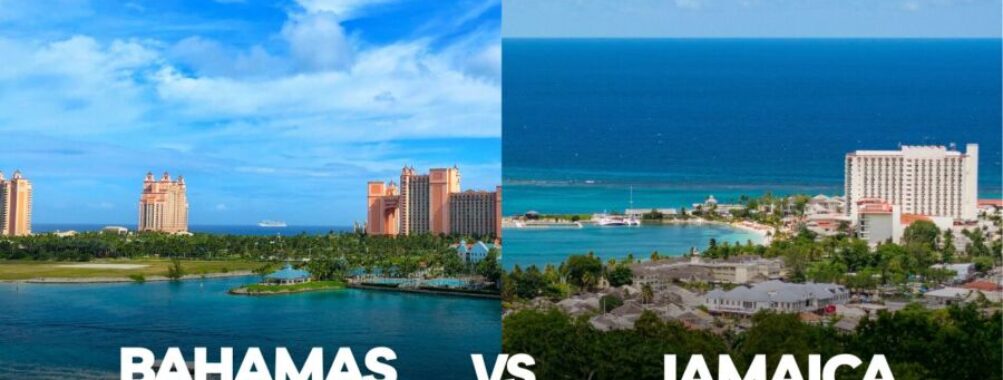
Bahamas vs Jamaica: 7 Key Differences to Know Before Booking Your 2025 Caribbean Getaway
Dreaming of a Caribbean getaway but can’t decide between the Bahamas and Jamaica? These two stunning island destinations offer completely different experiences despite being in the West Indies. While Jamaica sits in the Caribbean Sea and features one main island with a few offshore keys, the Bahamas comprises about 700 islands, cays, and islets in the Atlantic Ocean.
The difference goes beyond geography. Jamaica wins hearts with its vibrant culture, mouthwatering cuisine, and lush mountainous landscapes. Conversely, the Bahamas dazzles with pristine beaches, upscale dining options (including Michelin-starred restaurants), and famous swimming pigs in the Exumas.
Safety often comes up when comparing these destinations. The Bahamas generally has a slight edge in this department, though tourists can expect safe travels to either location with proper precautions. The Bahamas’ Royal Bahamian resort offers convenient access for travelers seeking ease, though its beach is smaller than you might find at Jamaica’s breathtaking South Coast.
Contents
- Geographical Overview
- Location and Size
- Climate and Weather
- Cultural Exploration
- Historical Influence
- Music and Art
- Local Cuisine
- Tourist Attractions
- Beaches and Natural Beauty
- Historic Sites
- Entertainment and Nightlife
- Travel Logistics
- Entry Requirements
- Transportation Options
- Safety and Travel Advisories
- Accommodation and Dining
- Hotels and Resorts
- All-Inclusive Packages
- Local Restaurants
- Economic Considerations
- Cost of Travel
- Currency and Exchange Rates
- Budgeting Tips
- Comparative Analysis
- Pros and Cons
- Unique Offerings
- Visitor Experiences
- Frequently Asked Questions
- What are the key differences in tourist attractions between the Bahamas and Jamaica?
- How do the cultural experiences in the Bahamas compare to those in Jamaica?
- In terms of safety, how do the Bahamas and Jamaica differ for travelers?
- Can you highlight the cost distinctions between visiting the Bahamas and Jamaica?
- What are the considerations when choosing all-inclusive resorts in Jamaica and the Bahamas?
- Which destination is preferable for couples seeking a romantic honeymoon, the Bahamas or Jamaica?
- More Travel Guides
Geographical Overview
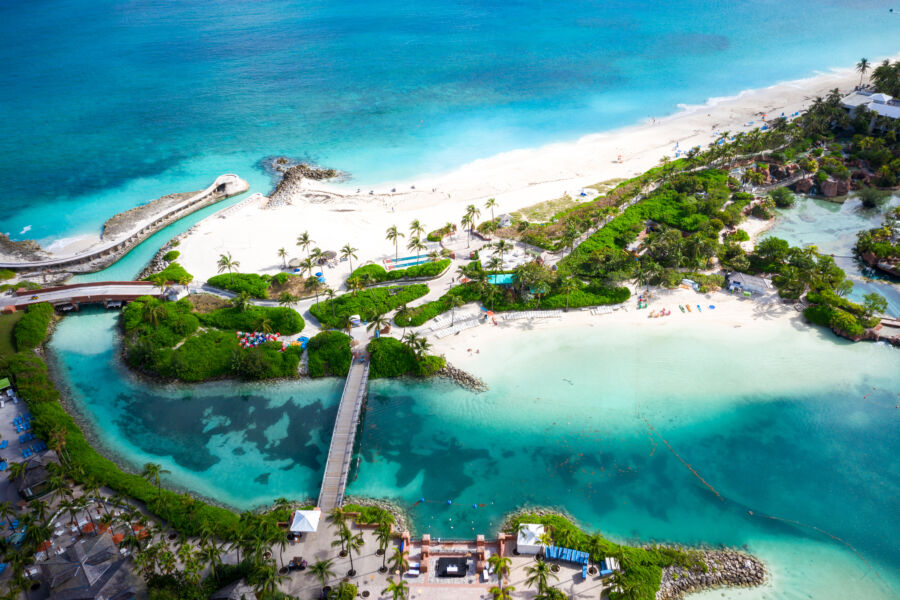
The Bahamas and Jamaica offer distinct geographical characteristics that shape their tourism appeal. Both nations are located in the Caribbean region but differ in size, terrain, and natural features.
Location and Size
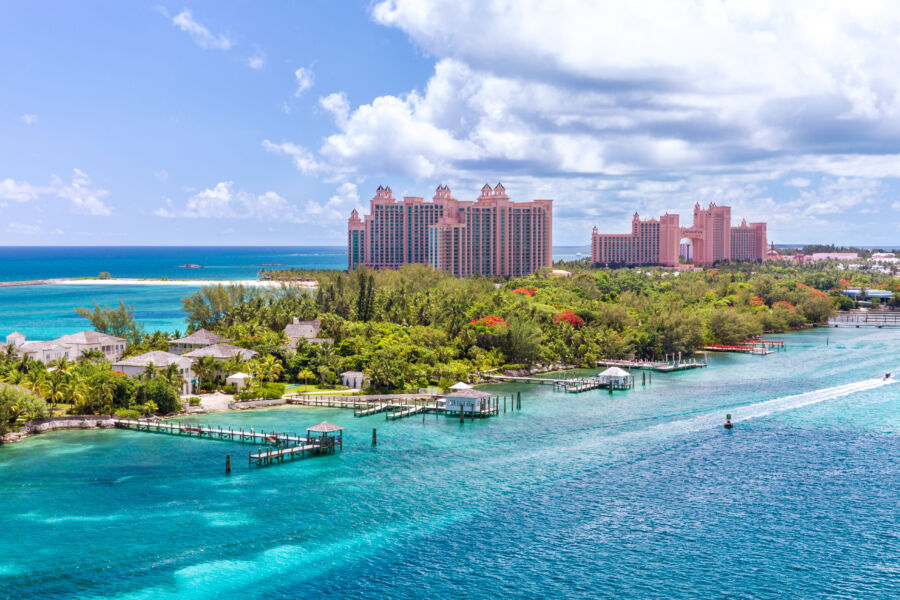
The Bahamas is an archipelago with over 700 islands and cays, with only about 30 inhabited. It’s located north of Cuba and southeast of Florida, covering approximately 13,878 square kilometers. Most Bahamian islands are flat and low-lying, with the highest point reaching just 63 meters above sea level on Cat Island.
On the other hand, Jamaica is a single large island located south of Cuba. It’s slightly smaller than the Bahamas at 10,990 square kilometers.
Unlike the flat Bahamas, Jamaica features dramatic mountainous terrain, with the Blue Mountains rising to 2,256 meters. This mountainous landscape creates diverse ecosystems not found in the Bahamas.
The nations also differ in population density. Jamaica is much more densely populated, with about 248 people per square kilometer, while the Bahamas has fewer residents spread across its many islands.
Climate and Weather
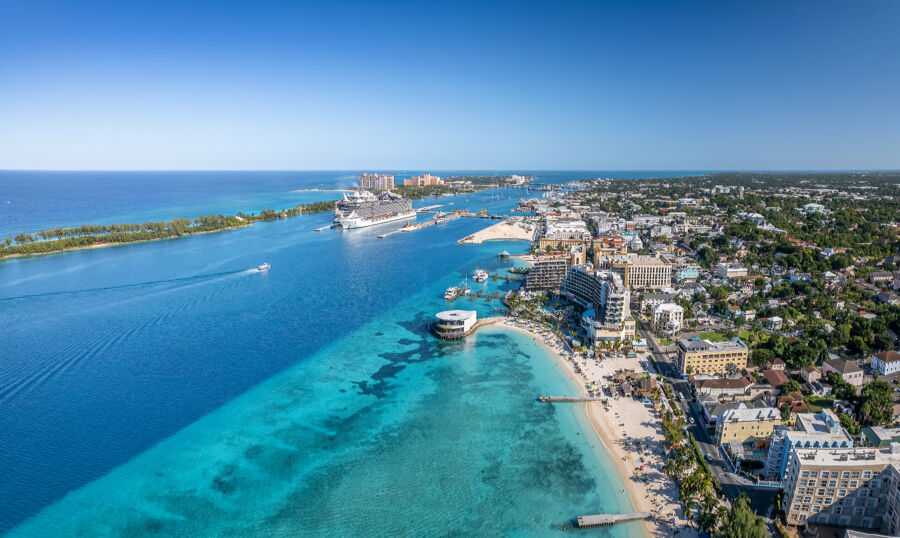
Both countries enjoy tropical climates but with some notable differences. The Bahamas has a slightly milder climate due to its more northern position.
Average temperatures range from 21°C (70°F) in winter to 27°C (80°F) in summer. The water temperature stays pleasant year-round but is typically slightly cooler than Jamaica’s waters.
Jamaica’s climate is more consistently warm and humid. The island experiences average temperatures between 25-30°C (77-86°F) throughout the year.
Rainfall patterns differ, too. Jamaica receives more precipitation, especially in the mountains, which can exceed 300 inches annually.
Both destinations experience hurricane season from June to November. Being more spread out, the Bahamas sometimes experiences different weather conditions across its various islands. Jamaica’s varied elevation creates micro-climates, with cooler temperatures in the mountains compared to the coastal areas.
Cultural Exploration

The Bahamas and Jamaica offer rich cultural experiences shaped by their colonial history, African roots, and island traditions. Visitors can immerse themselves in vibrant local customs that manifest through unique historical sites, musical traditions, and flavorful cuisine.
Historical Influence

The Bahamas carries deep British colonial roots, which is evident in its architecture and governmental structure. Nassau’s colorful colonial buildings and Fort Charlotte offer glimpses into the island’s past as a British colony. The islands also have a compelling pirate history, with attractions like the Pirates of Nassau Museum showcasing this adventurous era.
Jamaica’s history tells a different story. Spanish and British colonization, alongside a powerful slave resistance movement, shaped its cultural identity.
Visitors can explore plantations like Rose Hall Great House or the historic Devon House. The Maroon communities descended from escaped slaves who formed independent settlements, represent a unique aspect of Jamaican heritage not found in the Bahamas.
Both nations celebrate their independence days with colorful festivals and parades, though Jamaica’s cultural resistance narrative tends to be more prominent in its historical sites.
Music and Art
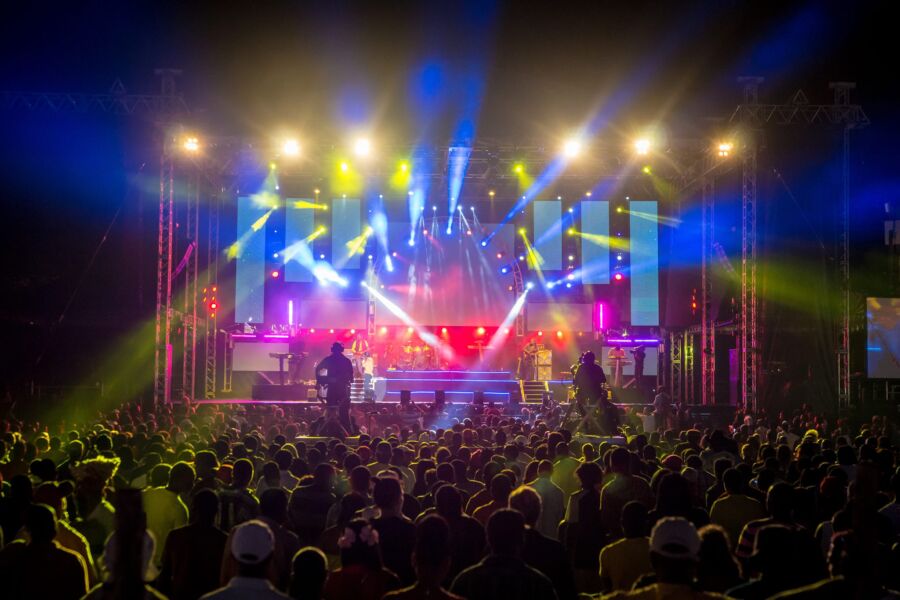
Jamaica dominates in musical influence as the birthplace of reggae, dancehall, and ska. Bob Marley’s legacy draws music lovers worldwide, with his former home now a popular museum. The country pulses rhythmically, from street performances to major festivals like Reggae Sumfest.
The Bahamas offers its distinctive sound through Junkanoo, a street parade with colorful costumes, goatskin drums, and cowbells. This festival happens primarily during Christmas and New Year’s celebrations. Bahamian art often features vibrant island scenes, while wood carving traditions showcase local craftsmanship.
Both countries embrace visual arts through galleries and markets, but Jamaica’s art scene often incorporates more political and social commentary, reflecting its revolutionary spirit. Street art is particularly expressive in Kingston, where murals tell stories of resistance and hope.
Local Cuisine

Food in both destinations reflects their diverse cultural influences. Jamaican cuisine tends to be bolder and spicier, featuring signature dishes like jerk chicken, ackee, saltfish (the national dish), and curried goat. Blue Mountain coffee and rum are prized Jamaican exports that visitors can sample.
Bahamian food centers around seafood, particularly conch, prepared as fritters, salads, or stews. Cracked conch and conch salad are must-tries. Rock lobster and johnnycakes (a type of bread) appear on many menus. The national drink, Sky Juice, combines gin, coconut water, and condensed milk.
Both countries serve varieties of rum punch, though Jamaica’s rum has gained more international recognition. Food festivals happen year-round in both destinations, offering visitors chances to sample authentic dishes beyond resort offerings.
Tourist Attractions
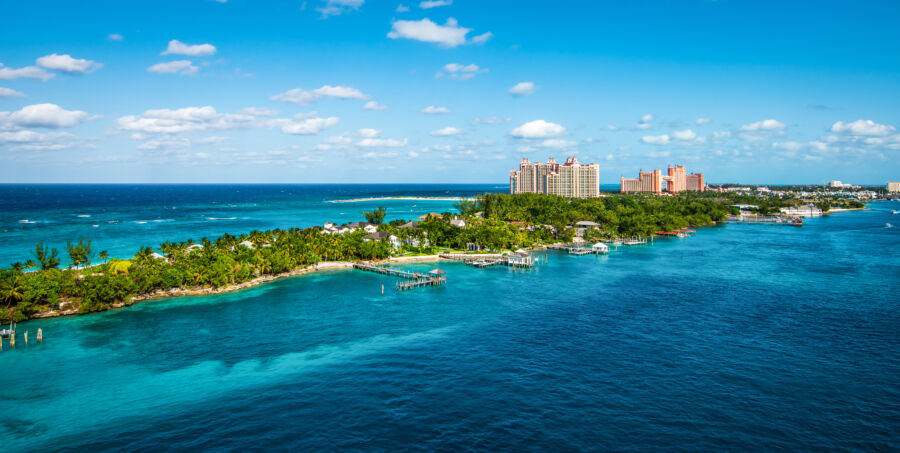
Jamaica and the Bahamas offer incredible attractions that draw millions of visitors yearly. From pristine beaches to historic landmarks and vibrant nightlife, these Caribbean destinations provide unforgettable experiences for every type of traveler.
Beaches and Natural Beauty
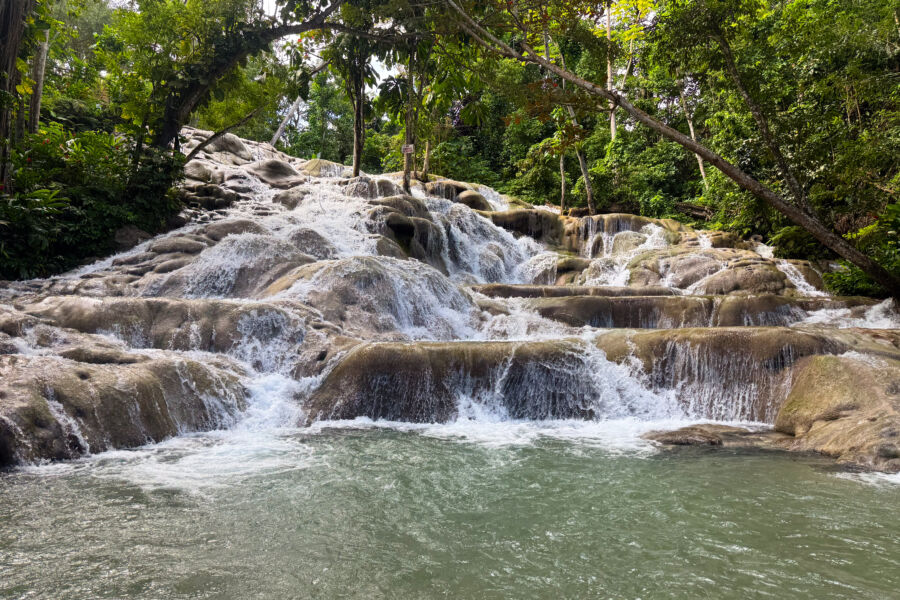
Jamaica boasts dramatic landscapes with lush mountains meeting turquoise waters. Seven Mile Beach in Negril offers sunset views that take your breath away. Dunn’s River Falls near Ocho Rios lets visitors climb 600 feet of cascading waterfalls – a must-do for adventure seekers!
The Bahamas wins the underwater beauty contest with clearer waters ideal for diving and snorkeling. With over 700 islands, the beach options seem endless. Pink Sands Beach on Harbour Island features rare rose-colored sand that feels like walking on powder.
Blue Hole National Park in Jamaica offers freshwater pools hidden in caves, while the Bahamas’ famous blue holes attract divers from around the world. Exuma’s swimming pigs have become an iconic Bahamian attraction – where else can you paddle alongside friendly porkers in crystal waters?
Historic Sites
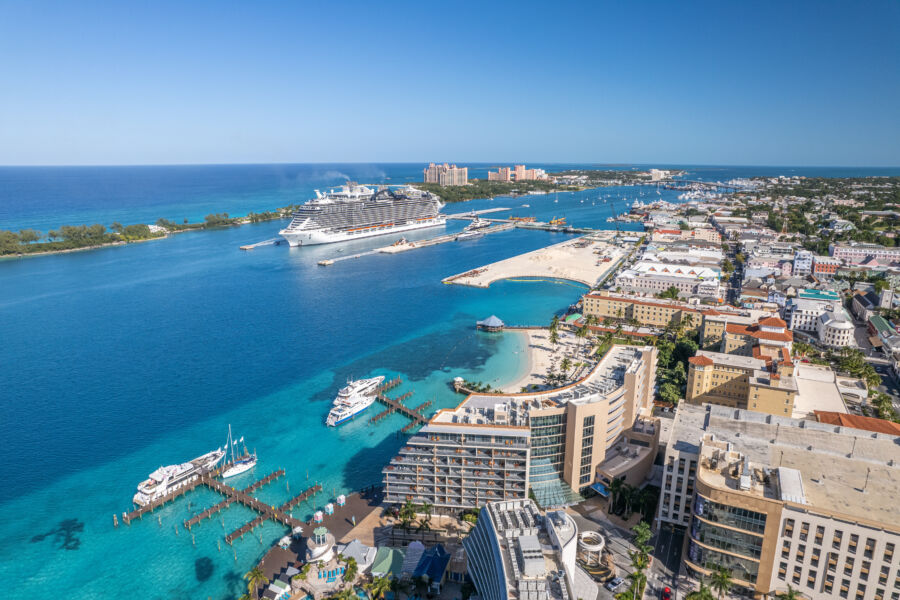
Nassau, the Bahamian capital, features well-preserved colonial architecture. Fort Charlotte, built in the late 18th century, offers panoramic views and fascinating underground passages. The Queen’s Staircase, 66 steps carved from solid limestone, commemorates Queen Victoria’s reign.
Jamaica’s history runs deeper, with great plantation houses like Rose Hall near Montego Bay, which is rumored to be haunted by its former mistress. Port Royal, once called “the wickedest city on Earth,” now sits mostly underwater after a 1692 earthquake, but remaining structures tell tales of its pirate past.
Kingston’s National Museum explores Jamaica’s complex history from indigenous Taino people through colonization and independence. The Bob Marley Museum, housed in the reggae legend’s former home, offers a glimpse into his life and global impact.
Entertainment and Nightlife

Jamaica’s vibrant music scene comes alive after dark. Kingston’s street parties pulse with reggae and dancehall, while Montego Bay’s Hip Strip features beachfront clubs with live bands. The island’s all-inclusive resorts often showcase authentic Jamaican entertainment nightly.
The Bahamas edges ahead with casino entertainment options, particularly in Nassau’s massive Atlantis resort. Their junkanoo parades – colorful street festivals with elaborate costumes – offer cultural immersion unlike anything in Jamaica.
Both destinations feature rum tastings, though Jamaica’s distillery tours offer more depth for spirit enthusiasts. The Bahamas has more upscale dining options, especially in Nassau, while Jamaica excels at authentic local food experiences. Photos and videos rarely capture the energy of either island’s entertainment scenes – they must be experienced firsthand!
See Related: Barbados vs Jamaica: Key Differences to Know Before Booking Your 2025 Caribbean Getaway
Travel Logistics

When choosing between Jamaica and the Bahamas, understanding the logistics of your trip can make or break your vacation experience. Each destination has its unique requirements and considerations that might influence your decision.
Entry Requirements

Jamaica and the Bahamas welcome tourists with relatively straightforward entry procedures, but some differences exist.
For Jamaica, U.S. citizens need a valid passport that won’t expire during their stay. No visa is required for visits under 90 days. You’ll need to complete an immigration form either on your flight or upon arrival.
The Bahamas has similar requirements—a valid passport and no visa are needed for U.S. tourists staying less than 90 days. They also require travelers to complete a Bahamas Travel Health Visa application online before arrival, which includes health insurance.
Both countries may request proof of onward travel and sufficient funds for your stay. Before traveling, it’s always smart to check the U.S. State Department website, as requirements can change.
Transportation Options
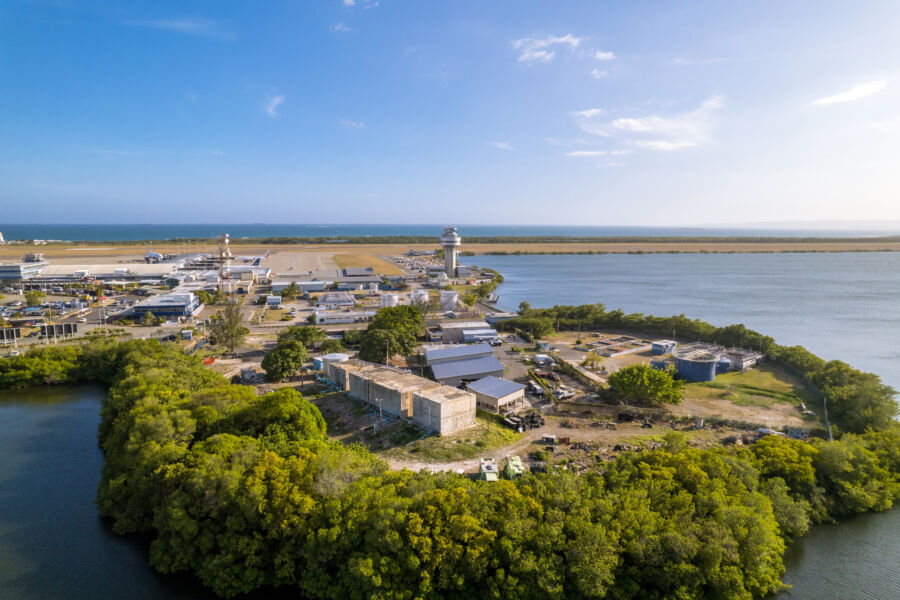
Getting to these island paradises offers different experiences in terms of accessibility and options.
Two main international airports serve Jamaica:
- Sangster International (Montego Bay)
- Norman Manley International (Kingston)
Most tourists arrive at Montego Bay, with direct flights available from many U.S. cities. Once on the island, transportation options include:
- Resort shuttles
- Taxi services (negotiate price before riding)
- Rental cars (driving is on the LEFT side)
- Public buses (cheaper but less reliable)
The Bahamas has greater flight accessibility with:
- Lynden Pindling International (Nassau)
- Grand Bahama International
- Several smaller airports serving outer islands
The Bahamas’ proximity to Florida means shorter flights from the U.S. east coast. Island hopping is common via domestic flights, ferries, and water taxis.
Safety and Travel Advisories
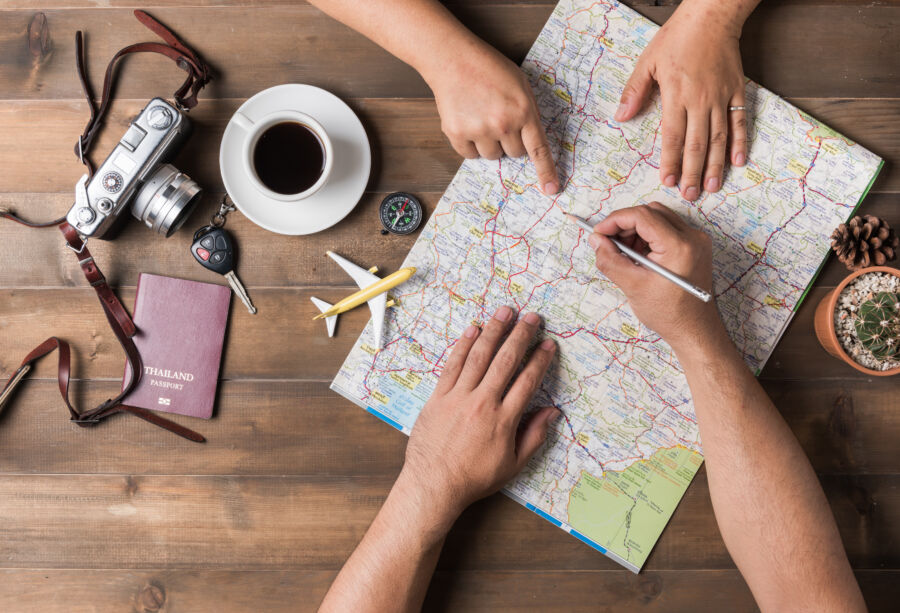
Safety considerations differ between these destinations and should factor into your decision-making process.
Jamaica currently carries a Level 3 travel advisory (“Reconsider Travel”) from the U.S. State Department due to crime concerns in certain areas. Tourist resorts generally maintain good security but exercise caution when venturing off-resort. Areas of Kingston and parts of Montego Bay have higher crime rates.
The Bahamas holds a Level 2 advisory (“Exercise Increased Caution”), making it relatively safer by comparison. Most crime occurs in Nassau, while the outer islands have fewer incidents. Water safety is important in both countries.
Both destinations have experienced hurricane threats, typically from June through November. Travel insurance is highly recommended, especially during hurricane season. Always register with the Smart Traveler Enrollment Program (STEP) before visiting either country to receive safety updates and emergency assistance if needed.
Accommodation and Dining
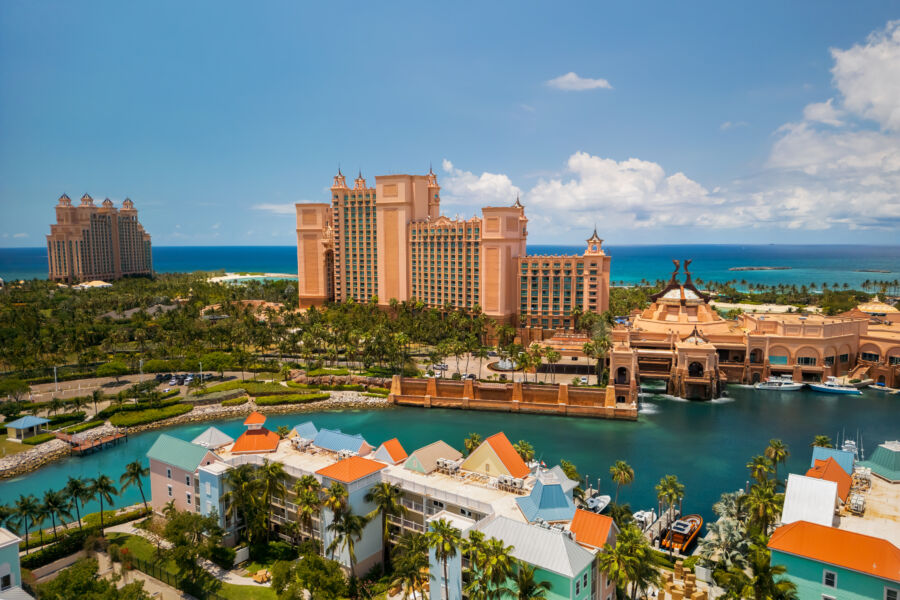
Where you stay and what you eat form a huge part of your vacation experience. Jamaica and the Bahamas offer distinct options catering to different travel styles and budgets.
Hotels and Resorts
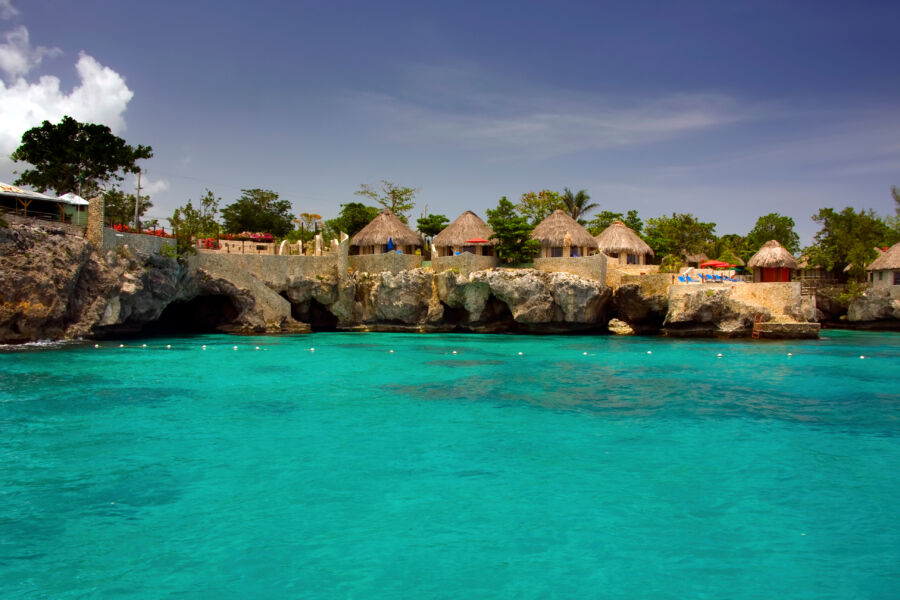
The Bahamas boasts upscale accommodations that are more luxurious than you’ll find in Jamaica. The iconic Atlantis resort on Paradise Island is the crown jewel, offering waterparks, marine exhibits, and casino entertainment that Jamaica simply can’t match. Many Bahamian resorts feature pristine private beaches with powder-white sand.
Jamaica’s accommodations have a more authentic Caribbean vibe. You’ll find everything from boutique cliffside hotels in Negril to sprawling beachfront properties in Montego Bay.
Luxury accommodations in Jamaica often cost less than comparable options in the Bahamas, making it the better choice for budget-conscious travelers seeking upscale experiences. Both destinations offer family-friendly resorts, but Jamaica typically provides more affordable options with similar amenities.
All-Inclusive Packages
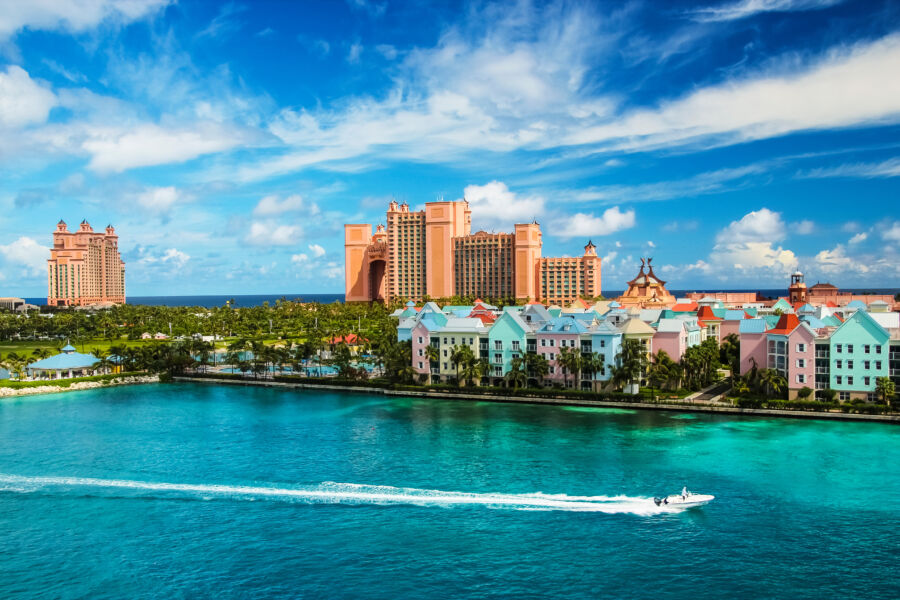
Jamaica reigns supreme in the all-inclusive game. The island pioneered the concept and continues to excel with brands like Sandals, which offer some of the best all-inclusive experiences in the Caribbean. These packages typically include unlimited food, drinks, activities, and entertainment for one upfront price.
Jamaican all-inclusive tends to be more value-packed, with generous inclusions like water sports, excursions, and premium spirits. The food quality at Jamaican all-inclusive often surpasses expectations, with authentic local cuisine featured alongside international options.
The Bahamas offers fewer all-inclusive options, but those available are more upscale. The trade-off is higher prices but potentially more refined experiences. Many visitors report that Bahamian all-inclusive has better beaches but fewer activities than Jamaica.
Local Restaurants
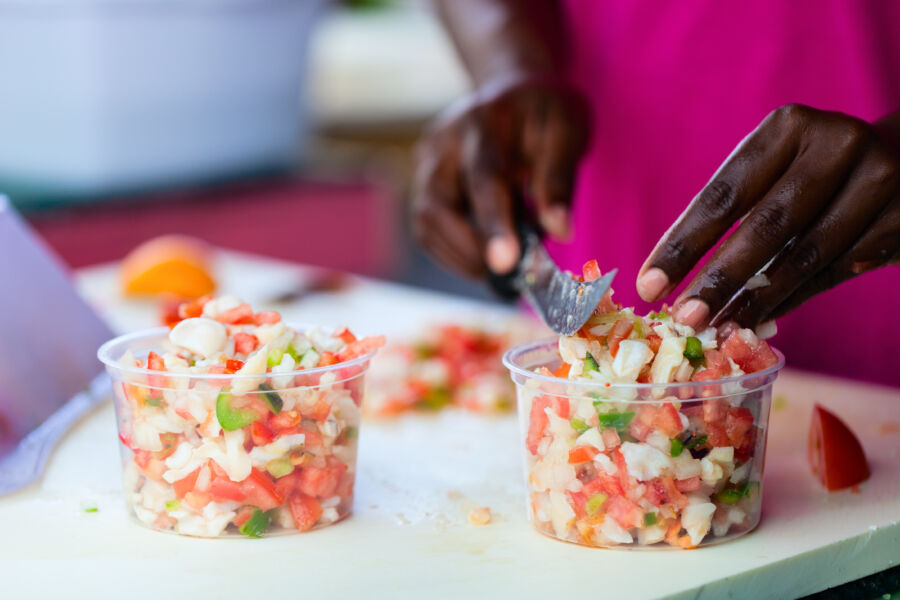
Jamaica wins the food battle hands-down. The island’s world-famous cuisine features bold flavors and distinctive dishes like jerk chicken, ackee, saltfish, and curried goat. Street food is abundant and affordable, giving budget travelers plenty of delicious options.
Jamaican restaurants often feature live music and an authentic atmosphere that connects you with the culture. Small roadside spots often serve the most memorable meals at a fraction of resort prices.
The Bahamas offers excellent seafood, particularly conch, prepared in various ways – fritters, salads, and chowders. Dining tends to be more expensive in the Bahamas, especially in tourist areas. Some visitors note that Bahamian cuisine, while tasty, lacks the distinctive character and variety found in Jamaica.
Both destinations have great rum drinks, but Jamaica’s cocktail scene features more local ingredients and traditional recipes.
See Related: Hidden Caribbean Beaches Locals Don’t Want Tourists Finding
Economic Considerations

The Bahamas and Jamaica’s economies reveal striking differences in wealth, cost structure, and overall travel experience. These factors will significantly impact your vacation budget and overall experience.
Cost of Travel

The Bahamas is definitely the pricier option between these two island destinations. Luxury resorts in Nassau or Paradise Island can set you back $300-500 per night, while comparable accommodations in Jamaica might cost $150-250. This price gap extends to most aspects of your trip.
Food costs show similar patterns. A decent restaurant meal in the Bahamas averages $25-40 per person, while in Jamaica, you might pay $15-25 for similar quality. Even basic items like bottled water and snacks cost more in the Bahamas.
Transportation expenses follow suit. Taxi fares in the Bahamas typically start around $15-20 for short trips, whereas similar journeys in Jamaica might cost $8-12. Car rentals also tend to be about 30% higher in the Bahamas.
Currency and Exchange Rates

The Bahamas uses the Bahamian Dollar (BSD), which is pegged to the US Dollar at a 1:1 ratio. This makes transactions straightforward for American travelers – US dollars are widely accepted throughout the islands.
Jamaica uses the Jamaican Dollar (JMD), which fluctuates against major currencies. As of early 2025, USD 1 equals roughly 155 JMD. While many tourist areas accept US dollars, you’ll get better value using local currency, especially in markets and local shops.
Both countries have ATMs that are widely available in tourist areas. Credit cards are commonly accepted at hotels and larger restaurants, though smaller vendors may prefer cash.
Budgeting Tips
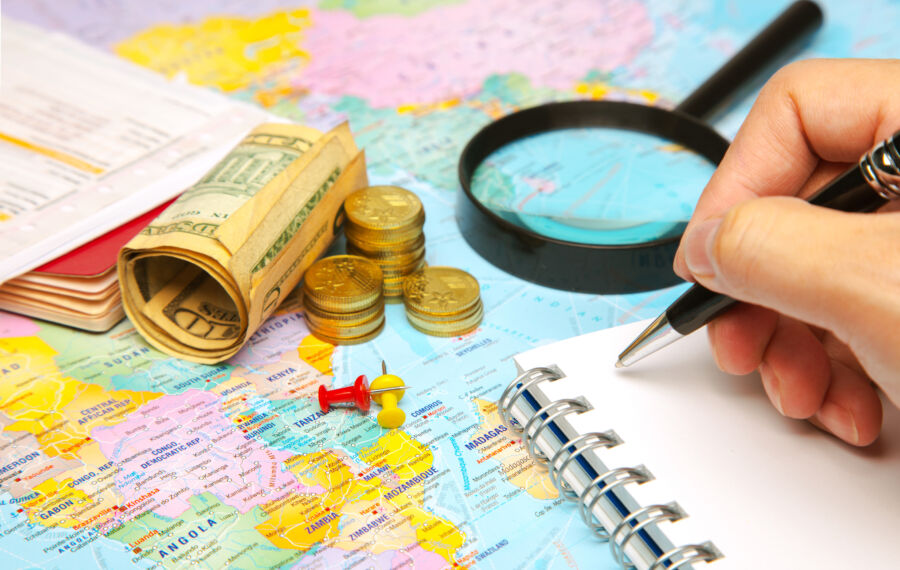
To manage costs in the Bahamas, consider all-inclusive resorts. These packages might seem expensive upfront, but they can save money compared to paying separately for meals and activities. Nassau’s public beaches are free and just as beautiful as resort beaches.
Jamaica offers more budget-friendly options. Local guesthouses provide authentic experiences at a fraction of resort prices. Street food is delicious and affordable – try jerk chicken from roadside stands for $5-7.
For both destinations, visiting during shoulder season (late spring or fall) can save 20-30% on accommodations. Package deals combining airfare and hotels often provide better value than booking separately.
Consider local transportation, such as shared taxis in Jamaica or public jitneys in the Bahamas, to save money on getting around. The savings can add up quickly!
Comparative Analysis

Let’s examine how Jamaica and the Bahamas compare. These Caribbean neighbors offer distinct experiences despite sharing beautiful beaches and tropical climates. Their differences in economy, attractions, and visitor experiences create unique vacation opportunities for travelers.
Pros and Cons

The Bahamas shines with its crystal-clear waters and proximity to the US mainland. A quick 50-minute flight from Florida makes it accessible for American tourists.
Their well-developed tourism infrastructure includes luxury resorts and cruise ports. However, the Bahamas tends to be pricier, with higher accommodation and food prices.
Jamaica offers more bang for your buck with generally lower prices. The island boasts more diverse landscapes, from mountains to rainforests.
Jamaica’s rich cultural scene, especially its music, is unmatched. The downside? Some areas have safety concerns that require more caution from visitors.
Both countries face hurricane risks during certain seasons, but the Bahamas experiences more direct hits due to its northern location.
Unique Offerings
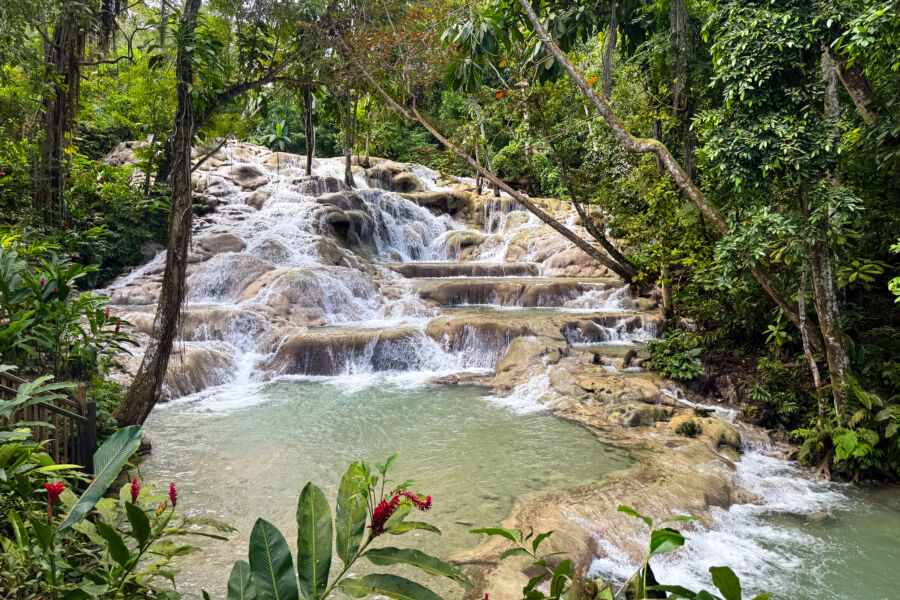
Jamaica’s distinctive culture separates it with reggae music, jerk cuisine, and vibrant local traditions. The island’s geography includes the famous Blue Mountains, stunning Dunn’s River Falls, and the mystical Blue Lagoon. Adventure seekers can explore caves, zip-line through forests, or climb waterfalls.
The Bahamas excels with its underwater experiences. The archipelago offers the world’s best diving spots, with the third-largest barrier reef system globally.
The famous swimming pigs of Exuma attract tourists from everywhere. The Bahamas also boasts pink sand beaches and impressive luxury resorts.
Economic differences are notable, too. The Bahamas has a higher GDP per capita but less agricultural land (only 1.4% compared to Jamaica’s 41.4%), making Jamaica more self-sufficient in food production.
Visitor Experiences
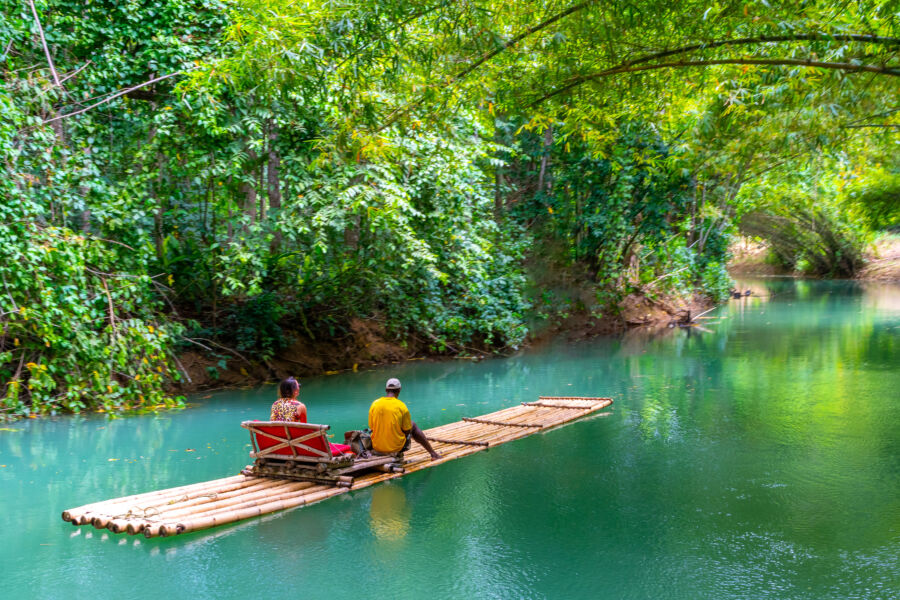
First-time Caribbean travelers often find the Bahamas more accessible and comfortable. Its tourism-centered economy means smooth, predictable experiences with excellent service. Resort areas like Nassau and Paradise Island offer contained vacation environments where everything comes to you.
Jamaica delivers a more authentic Caribbean experience. The local culture is everywhere – from roadside food stands to spontaneous music performances. Visitors rave about the warmth of Jamaican people, though some report more persistent vendors than in the Bahamas.
Food experiences differ significantly. Jamaican cuisine brings bold flavors with jerk seasoning, curry goat, ackee, and saltfish.
Bahamian food features fresh seafood, especially conch, prepared in various ways. Both countries offer a rum, but Jamaica’s brands, like Appleton, are world-renowned.
See Related: Jamaica vs St. Lucia: Stunning Differences to Know Before Your Caribbean Escape
Frequently Asked Questions
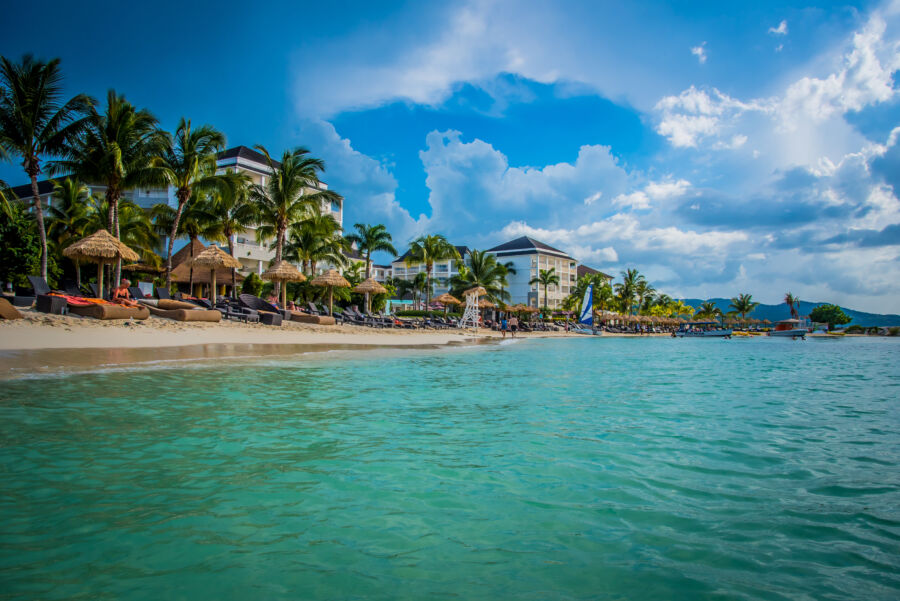
Travelers often have specific concerns when choosing between the Bahamas and Jamaica for their Caribbean getaway. Let’s explore key differences to help you decide which island paradise suits your vacation style best.
What are the key differences in tourist attractions between the Bahamas and Jamaica?
The Bahamas shines with its water activities and pristine beaches. The islands are famous for swimming with pigs at Pig Beach, incredible snorkeling in clear waters, and exploring the underwater caves at Thunderball Grotto.
Jamaica offers more diverse land-based attractions. Visitors can climb Dunn’s River Falls, explore the Blue Mountains, or visit Bob Marley’s home in Nine Mile.
Jamaica’s attractions tend to focus more on nature adventures and cultural experiences. The Bahamas has a slight edge for snorkeling and diving enthusiasts, with better visibility and more extensive reef systems.
How do the cultural experiences in the Bahamas compare to those in Jamaica?
Jamaica has a stronger, more distinct cultural identity. The island’s reggae music, Rastafarian culture, and spicy jerk cuisine create an immersive cultural experience. Local markets, street festivals, and music events give travelers many opportunities to connect with authentic Jamaican life.
The Bahamas has a more subdued cultural scene. While you’ll find junkanoo celebrations and local markets, the cultural experience tends to be less prominent than in Jamaica. Bahamian culture blends British colonial influences with African traditions.
Jamaican food is typically spicier and more diverse, while Bahamian cuisine focuses on seafood dishes like conch fritters and fish stews.
In terms of safety, how do the Bahamas and Jamaica differ for travelers?
The Bahamas generally has lower crime rates in tourist areas. Resort areas like Nassau and Paradise Island maintain strong security presences, making them comfortable for most travelers. Smaller, more remote Bahamian islands tend to have even fewer safety concerns.
Jamaica requires more caution in certain areas. While resort zones like Montego Bay and Negril are well-policed, travelers should be more aware of their surroundings when venturing outside these areas. Both countries experience petty theft targeting tourists, so basic precautions are always recommended regardless of destination.
Can you highlight the cost distinctions between visiting the Bahamas and Jamaica?
Jamaica typically offers more budget-friendly options for travelers. Food, transportation, and accommodation generally cost less than in the Bahamas. You can find good value all-inclusive resorts and more affordable local dining options throughout Jamaica.
The Bahamas tends to be pricier, especially in main tourist hubs like Nassau and Paradise Island. Restaurant meals, hotel rates, and activities often come with higher price tags, and island hopping adds additional transportation costs.
Both destinations offer luxury experiences, but your money generally stretches further in Jamaica for similar quality experiences.
What are the considerations when choosing all-inclusive resorts in Jamaica and the Bahamas?
Jamaica excels in the all-inclusive resort experience. The country pioneered this concept and offers numerous options, from budget to ultra-luxury. Jamaican inclusive packages often include more activities, entertainment options, and dining variety.
Bahamian all-inclusive tend to focus more on the beachfront experience and water activities. They may offer fewer included amenities but compensate with stunning locations and beautiful beaches. Room quality and service standards vary widely in both countries, so researching specific resorts rather than just the destination is important for making the best choice.
Which destination is preferable for couples seeking a romantic honeymoon, the Bahamas or Jamaica?
The Bahamas offers more secluded romantic experiences. Private islands, isolated beaches, and exclusive resorts create intimate settings for couples. The calm, clear waters, and stunning sunsets provide a picturesque backdrop for romance.
Jamaica provides more adventure-mixed romance options. Couples can balance private moments with exciting excursions like climbing waterfalls or river rafting. Jamaica’s vibrant nightlife also appeals to couples wanting entertainment options.



